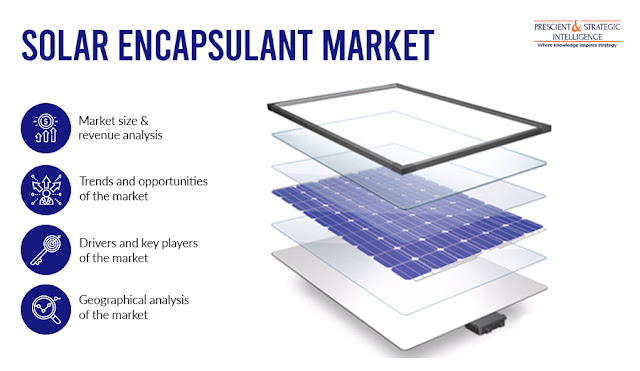
R&D Activities Improving Quality of Solar Encapsulants
The widescale installation of photovoltaic (PV) modules, continuous research and development (R&D) in solar cell technologies, and advent of crystalline silicon solar technology are expected to drive the solar encapsulant market at a CAGR of 28.4% during the forecast period (2018–2023). The market generated a revenue of $1,036.0 million in 2017 and it is projected to generate $4,555.4 million by 2023. Moreover, the escalating awareness among people regarding the benefits of the solar cell technologies will propel market growth in the coming years.
The material category of the solar encapsulant market is classified into ethylene vinyl acetate (EVA), polyvinyl butyral (PVB), polyolefin elastomer, and others. Among these, the EVA category generated the highest revenue in 2017. Manufacturers of PV cells prefer EVA over other encapsulating materials, as it offers higher adhesive strength, higher elasticity, and better protection against delamination and corrosion. Whereas, the PVB category will exhibit the fastest growth in the forecast years, due to its increasing application in laminated safety glass, which is widely used in the architectural, automotive, and aerospace industries.
The manufacturers use the aforementioned materials to produce large quantities of solar encapsulants, by deploying thin-film solar technology or crystalline silicon solar technology. The companies across the world apply both these technologies, due to their unique benefits and distinctive properties. Thin-film solar technology enables large-scale production of solar modules at low cost, as it consumes less amount of raw materials. Whereas, high conversion efficiency and rapid payback in terms of energy savings of crystalline silicon solar technology are the key reasons behind its increasing deployment.
Additionally, North America is also expected generate considerable revenue in the solar encapsulant market in the coming years. This can be attributed to the widescale installation of solar panels in commercial and residential buildings, largescale establishment of solar cell production units, and strong presence of established players in the region. Furthermore, Europe will also account for significant market share, on account of the increasing presence of encapsulate film manufacturers, surging investments in solar cell technologies, and growing support from governments to strengthen the solar energy ecosystem in the region.
Thus, the constant developments in solar cell technologies and the gradual shift toward solar energy will accelerate the consumption of solar encapsulants in the coming years.
Source: www.psmarketresearch.com
Comments